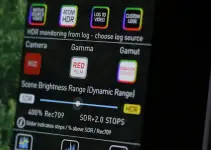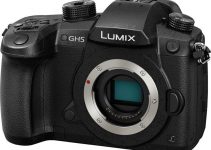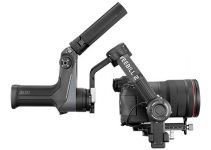It goes without saying, framing and composition has the power to completely change your narrative. As a filmmaker, it’s essential to understand how film language can manipulate the manner in which the audience interprets your visual storytelling, simply based on how you position your camera.
For those interested in the topic, the insightful video essay by Wolfcrow below provides a few pieces of advice to follow when trying to decide which angles to shoot in the next time you start rolling.
When picking the right camera angle for your scene, first you should decide which would be the character that the audience will be identifying with. This step indicates who should hold more presence in the frame as your scene progresses. By having the audience see the actions and reactions of one person over others, you will allow them to put themselves in the shoes of your lead.
Secondly, you need to decide how many actors should be in your shot. When it comes to dialogue scenes, these normally take place between two people. Again, keep in mind that the way you frame your shot in this scenario can change the overall tone of your scene.
For instance, by shooting each character alone (in singles), you can convey a sense of loneliness or independence. On the other hand, by having both actors in the frame (i.e., actor seen over the shoulder of another), you can communicate a sense of confrontation or entrapment.
One question newbie filmmakers tend to ask frequently is knowing when to get close to their actors? As a rule, close-ups are regarded as a powerful asset in visual storytelling used to emphasize importance. That being said, if you’re trying to highlight an important aspect in your scene, you should save the close-up shots for those moments, rather than shooting an entire dialog scene with the camera close up on your actors’ faces.
Vertical positioning of the camera is another important aspect to consider when choosing your camera angles. By shooting at a low angle, you’re conveying a sense of dominance and power to your audience since they’re having to look up at your subject. On the other hand, by filming at a high angle, you can communicate weakness and obedience associated with this particular character.
Furthermore, when you frame a shot, pay attention to the points of focus in your scenes. Generally, audiences prefer not having to look at different points within the frame as the editor cuts between shots. With that in mind, try maintaining a consistent point of focus as your scene progresses – whether it be the top right corner of frame or bottom left.
However, while it’s preferred that you keep your points of focus consistent, you can use the idea of changing them to your advantage. By doing so, you can convey the sense that the plot has suddenly changed course, creating a feeling of confusion and suddenness for suspense.
Lastly, when deciding your camera angles, each scene should provide a sense of purpose to the entirety of your film. Shots that constitute as boring are usually attributed to the fact that they do not add anything to the audience’s understanding. On the other hand, shots that engage the audience stem from the fact that they help build a story since each frame contains new information.
All in all, film language is a form of communication that requires a lot of practice and understanding. Once you’ve grasped the basic tones portrayed by different camera angles and compositional formats, you will better understand what it takes to visually manipulate the audience and immerse them deeper into your story.
[source: wolfcrow]
Disclaimer: As an Amazon Associate partner and participant in B&H and Adorama Affiliate programmes, we earn a small comission from each purchase made through the affiliate links listed above at no additional cost to you.
Claim your copy of DAVINCI RESOLVE - SIMPLIFIED COURSE with 50% off! Get Instant Access!





